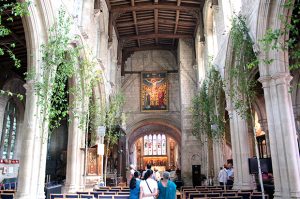Hiking in The Cotswolds – The Cotswolds through time
For our guests who are thinking of hiking in the Cotswolds. perhaps enjoying The Cotswold Way or our own circular walking route, it is worth detailing some of the regions human history.
We can date settlement in The Cotswolds from the Neolithic period where burial mounds or ‘long barrows’ as they are commonly known date from around 4000 BC. One of the very best examples of these long barrows is on The Cotswold Way route at Belas Knap near Cleeve Hill.
It was during the Iron Age (circa 800 BC) that the people built hillforts on the Limestone escarpment that you will see when hiking in The Cotswolds. These Hillforts contained ditches and ramparts and it is easy to recognise many sites including Beckbury Camp, Cleeve Hill and Crickley Hill.
During the Roman occupation of Britain (circa 50BC to 400AD) it is possible to still see their influence on the surrounding landscape with remains of the ‘Ermin Way’ Road near Birdlip and villa remains at Great Witcombe, as well as a few lesser known sites, which, If you would like some further information about when walking in The Cotswolds then drop us an email and we can provide details. Finally at the end of The Cotswold Way route there are the magnificent Roman Baths in Bath City Centre. We should perhaps say that it is worth considering adding a day onto your itinerary to spend a day in the beautiful city of Bath.

During The Medieval period, (circa 400 – 1400 AD) the Cotswold region thrived on the wool industry because of the famous ‘Cotswold Lion’ a breed of sheep that was prized for its fleece. Wealth was spend on building houses and beautiful churches in towns such as Winchcombe, Moreton in Marsh, Chipping Campden and Abbeys at Hailes and Bath.
Enjoy hiking in the Cotswolds.
If you would like to ask us any questions then get in touch at [email protected]




